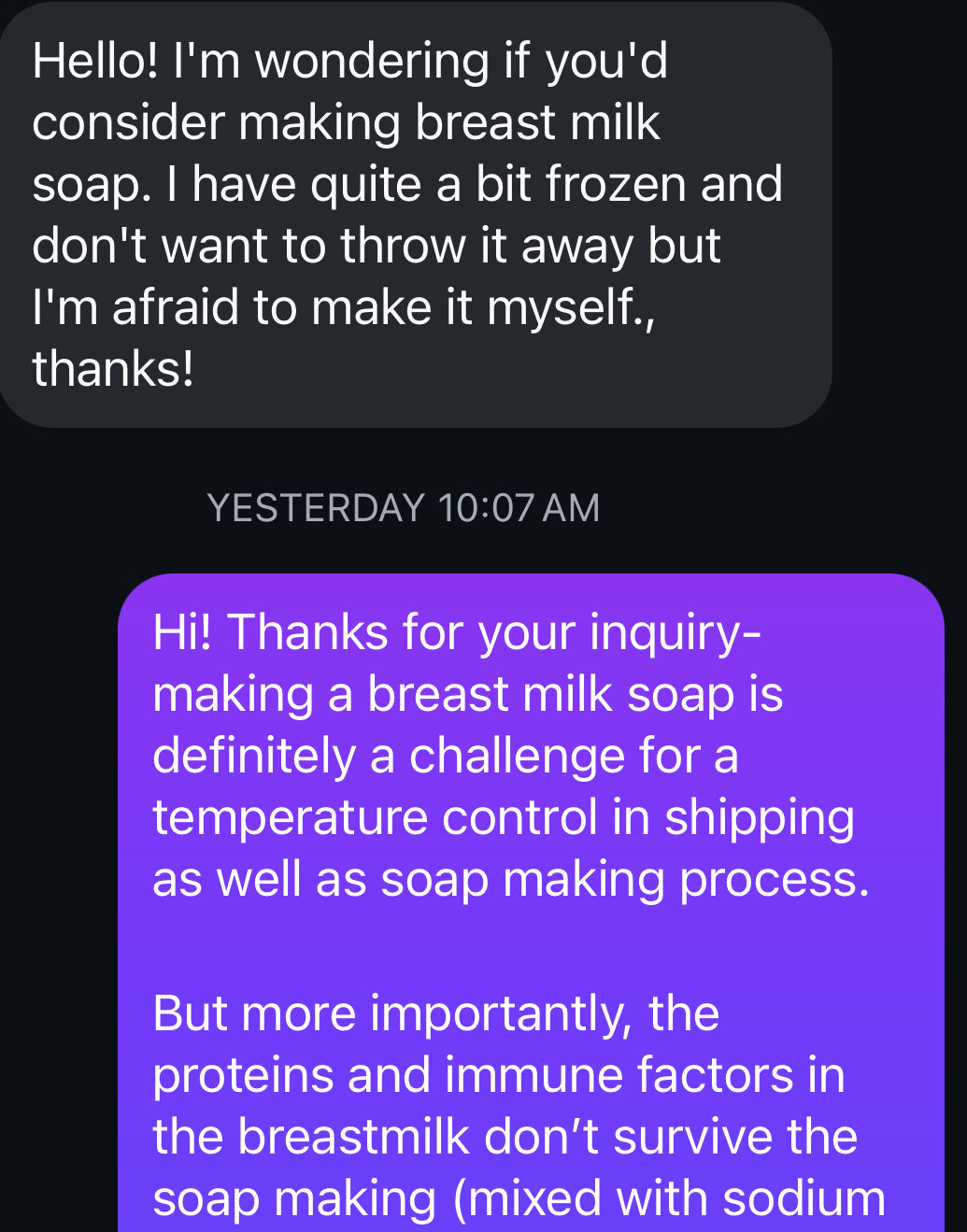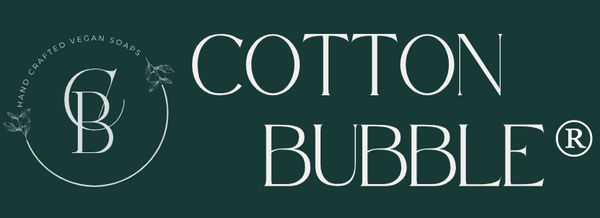Why I Don’t Offer Breast Milk Soap as a Biochemist and a Soapmaker

Breast milk is often described as “liquid gold” for babies, and rightly so. It is rich in nutrients, antibodies, and immune-boosting components that are critical for infant health. Because of its benefits, some people have wondered whether breast milk could also be used in skincare, particularly in handmade soap. As a biochemist and soap maker, I want to explain why I choose not to offer breast milk soap, not just because my brand is built on plant-based ingredients!
The Science Behind Soap Making and Protein Denaturation
Soap is created through a chemical reaction called saponification, where oils or fats react with sodium hydroxide (lye) to form soap and glycerin. This process happens in a high pH environment, usually around pH 12–14 at the start.
Here’s the important part:
-
Proteins, like the antibodies found in breast milk, are very sensitive to changes in pH and temperature.
-
At the beginning of saponification, the extremely high pH environment causes protein denaturation. This means the protein’s three-dimensional structure unravels, and once denatured, proteins can no longer function as they do in the body. (Easy way to understand the change of protein is that once you boil an egg, cooling it doesn't make it back to "unboiled" stage.)
Even as the soap reaches trace (the stage where oils and lye have begun reacting), the pH remains too high for delicate molecules to remain intact. At trace, there are fewer free hydroxide ions because they are binding with oils, and yes, this is the stage where milk (including cow’s milk or plant-based milks) is often added at controlled temperatures to minimize scorching.
But with breast milk, the immune components—especially antibodies—would still face drastic pH shifts and temperature changes. The result? They lose their biological activity.
Why “Antibody Soap” Doesn’t Work as Imagined
Even if antibodies somehow survived the soap-making process (which they don’t), their role in the body is very specific: they circulate in the bloodstream and interact with the immune system. Rubbing antibodies on the skin is not the same as having them function inside the body.
The skin has a protective outer barrier called the stratum corneum, which prevents large molecules like proteins from penetrating deeply. This is what keeps us safe but also means that applying denatured proteins from breast milk onto the skin provides no realistic immune benefit.
What Breast Milk Soap Really Is
At the end of the process, a “breast milk soap” bar is essentially a fat- and sugar-enriched soap with no active antibodies or immune benefits left intact. While it may be a meaningful keepsake for some families, from a biochemical and skincare standpoint, it is not functionally different from a soap made with another milk source, such as goat’s milk or oat milk.
Why I Don’t Offer It
As a soap maker with a background in biochemistry, my goal is to create products that are not only beautiful and enjoyable but also scientifically sound. Promoting breast milk soap as something with immune benefits could be misleading, since the science does not support that claim.
For that reason, I choose not to offer breast milk soap. Instead, I focus on plant-based formulations that are gentle, effective, and luxurious without relying on misconceptions about what certain ingredients can or cannot do outside of their natural biological context.
